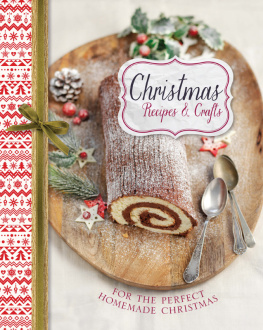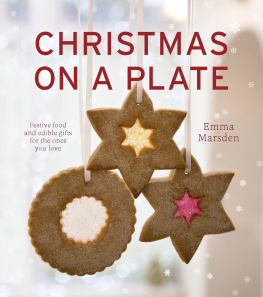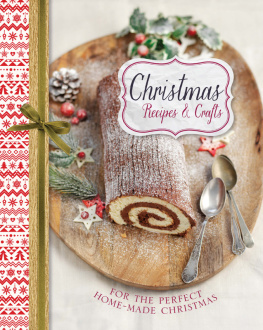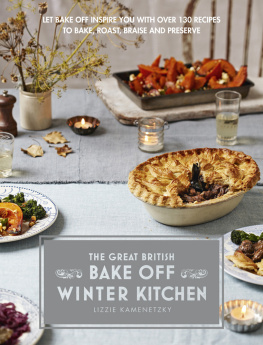

Shortbread
This recipe can be rolled out thinly and used to cut out your shapes, though you will need to take extra care as this dough has a high fat to flour ratio and is therefore a little more delicate. If you are new to working with cookie dough, then use this dough for more simple shapes rather than intricate ones.
You can flavour this however you like some festive flavour suggestions are orange/lemon zest, ground nutmeg, ground cinnamon, ground ginger, ground cardamom, almond extract or mint extract (pairs well with dark chocolate).
MAKES: 2430
200g [ cup plus 2 Tbsp] salted butter, at room temperature
85g [7 Tbsp] caster or granulated sugar
200g [1 cups] plain [all-purpose] flour, plus extra for dusting
70g [ cup plus 1 Tbsp] fine semolina
1/ Line a baking sheet that you can fit in the fridge with baking paper or a silicone mat. Beat the butter and sugar together in a large bowl until smooth and fluffy.
2/ Add the flour and semolina and mix until just combined. The dough should be slightly sticky, but soft and easy to handle. If necessary, wrap the dough in plastic wrap and chill for 1015 minutes until firm enough to roll out.
3/ Turn out onto a well-floured work surface and roll out to about 3mm [ in] thick. Use cutters or templates to cut out desired shapes, and transfer to the prepared baking sheet.
4/ Refrigerate for 15 minutes, while you preheat the oven to 160C [325F/Gas mark 3].
5/ Bake for 1015 minutes until just lightly browned at the edges. Leave to cool for 10 minutes on the baking sheet, then gently transfer to a wire rack to finish cooling. These can be left plain or decorated using .
Basic Vegan Shortbread
This shortbread tastes like it is full of butter, thanks to the coconut oil, and people are always surprised that its vegan. It has just a hint of sweetness, so its perfect for covering with royal icing. If eating these plain, then sprinkle some caster or granulated sugar on top just before baking. You can also add 2040g [1 Tbsp3 Tbsp] more sugar to the dough, but this will make the shortbread a little more chewy rather than crumbly.
MAKES: 2430
225g [1 cups] plain [all-purpose] flour, plus extra for dusting
130g [ cup] organic extra virgin coconut oil (solid and scoopable)
40g [3 Tbsp] caster or granulated sugar
3050ml [23 Tbsp] cold water
1 / Line a baking sheet that will fit in your fridge with baking paper or a silicone mat. Add the flour to a large bowl, then add the scoopable coconut oil and rub it into the flour using your fingers. Stir in the sugar, then add just enough cold water to bring the dough together into a ball.
2 / Turn the dough out onto a lightly floured work surface and roll out until it is 35mm [in] thick. Use cutters or templates to cut out your desired shapes. Transfer the shapes to the prepared baking sheet and chill for 15 minutes while you preheat the oven to 160C [325F/Gas mark 3].
3 / Bake for 1015 minutes until just starting to colour at the edges. Leave to cool on the baking sheet for 5 minutes, before transferring to a wire rack to finish cooling.

Speculoos
In Belgium, speculoos are traditionally eaten in the run-up to St Nicholas Day (6 December), but you will find yourself enjoying them all year round, as they are beautifully spiced and delicious dunked in a cup of tea or just on their own. This recipe specifies cassonade sugar (which is tricky to find but you can buy it online in speciality Belgian shops), which will give it that caramel flavour you are looking for in a good speculoos. You can substitute this with light brown muscovado sugar and it will still taste amazing, but just not caramelized as much.
MAKES: 3040
250g [1 cup plus 2 Tbsp] salted butter (or replace with vegan butter for the best results, use vegan butter that's close to 80% fat)
250g [1 cups] brown cassonade sugar (or light brown muscovado sugar)
tsp ground cinnamon
tsp ground nutmeg
tsp ground white pepper
tsp ground cloves
tsp ground cardamom
pinch of ground anise
tsp bicarbonate of soda [baking soda]
egg (or 2 Tbsp aquafaba [chickpea water])
350g [2 cups] plain [all-purpose] flour (or gluten-free flour plus tsp xanthan gum)
1 / Line a baking sheet with baking paper or a silicone mat and set aside for now. Cream the butter and cassonade sugar in a stand mixer fitted with a balloon whisk attachment until the butter and sugar is soft, fluffy and paler in colour. Scrape the sides and base of the bowl occasionally.
2 / Add all the spices, bicarbonate of soda and egg or aquafaba, then mix for a few more seconds until completely combined.
3 / Remove the bowl from the stand mixer and add all the flour. Use your hands to rub the butter and sugar mixture into the flour, then combine into a ball.
4 / Roll out the dough to just under 3mm [in] thick, then use cutters to cut into desired shapes. Transfer to the lined baking sheet and chill in the fridge for at least 20 minutes.
5 / When you are ready to bake, preheat the oven to 180C [350F/Gas mark 4].
6 / Bake for about 15 minutes, or until the edges are just starting to colour. Transfer to a wire rack and leave to cool.

Ginger Cookies
This cookie dough is a good alternative to the speculoos when you're making gingerbread houses.
MAKES: 3040
150g [ cup] salted butter
120g [ cup plus 1 Tbsp] dark muscovado [soft brown] sugar
2 tsp black treacle [molasses]
2 Tbsp beaten egg
2 Tbsp ground ginger
Tbsp ground cinnamon
tsp ground cloves
225g [1 cups] plain [all-purpose] flour

1 / Line a baking sheet with baking paper. Place the butter, sugar and treacle in a stand mixer (or use a handheld electric whisk) fitted with the balloon whisk attachment and mix on high speed until fluffy. Add the beaten egg and spices and mix briefly.
2 / Add the flour and combine into a ball with your hands. Turn out onto a floured surface and roll out to the thickness of a coin. Use cutters or templates to cut out your desired shapes, then transfer to the prepared baking sheet and refrigerate for 15 minutes. Preheat the oven to 170C [340F/Gas mark 3].
3 / Bake for 1012 minutes until just beginning to colour. Leave to cool for 10 minutes on the sheet, then gently transfer to a rack to finish cooling.


Cookie Decorating Tips & Ideas
ROYAL ICING CONSISTENCY
Different people like to work with different consistencies, but I like to work with what is called a 15-second icing. This means that after stirring the mixture, the surface will return back to its former smooth state in about 15 seconds. This consistency will work for both outlining AND flooding, so is much easier than making two batches. The definition of 15-second icing varies for everyone though, as everyone counts differently, so its mostly about practising and getting the feel for the correct consistency. My royal icing recipe on the following page should get you to roughly the consistency you will need, so hopefully you can work from there!
Next page





















